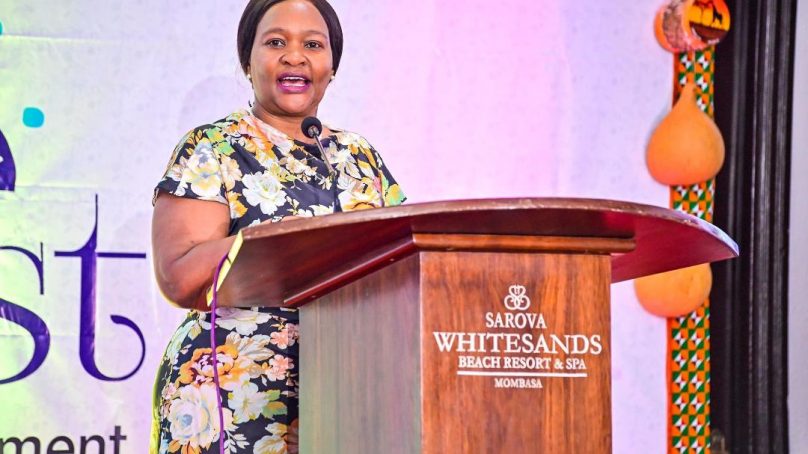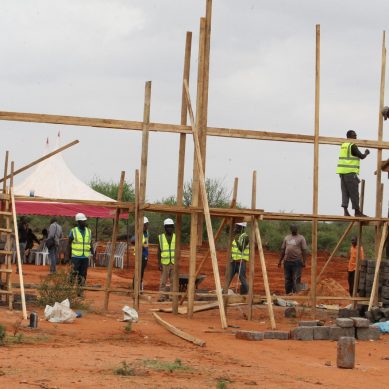
Kenya is committed to unlocking Kenya’s coastal tourism sector through strategic investments, partnerships and infrastructure development.
Speaking at the Kenya Coast Tourism Investment Conference 2025 organised by the Kenya Tourism Board at Sarova Whitesands Beach Resort and Spa in Mombasa, Tourism Cabinet Secretary Rebecca Miano said the coast region remained central to the country’s tourism industry as it generates more than Ksh100 billion annually and sustaining hundreds of thousands of jobs in hospitality, transport and cultural services.
“The coast region has always been a cornerstone of Kenya’s tourism. Our fertile soil, breath-taking natural beauty, rich cultural heritage and vibrant history combined with pristine beaches, magnificent coral reefs and timeless heritage sites continue to attract international visitors,” stated the CS.
“However, we face stiff competition from neighbouring destinations that have modernised their facilities. To maintain and grow our market share, we must reimagine and reposition our coastal assets to meet and surpass global standards,” she pointed out.
The cabinet secretary noted that the forum builds on the momentum of the Property Owners’ Forum held in Diani in August, which provided a platform for dialogue on coastal hospitality investments.
She said investing in the coast aligns with the government’s Bottom-Up Economic Transformation Agenda (BETA), which recognises tourism as a critical driver of foreign exchange, job creation and inclusive growth.
Miano highlighted progress in macroeconomic stability, including a stronger shilling and easing inflation, which she said provides a favourable climate for investment. She added that the government is supporting public-private partnerships to deliver large-scale projects ranging from roads to digital connectivity, with emphasis on sustainability and climate resilience.
“Our approach to mobilising investment is twofold. We are engaging leading international hotel chains and developers to bring in expertise and capital, while also mobilising local investors, including pension funds and high-net-worth individuals, to rebuild and expand our assets,” she said.
The cabinet secretary pointed to opportunities in rejuvenating existing facilities, developing eco-lodges, wellness retreats, and growing the Meetings, Incentives, Conferences and Exhibitions (MICE) sector. She further noted that direct flights to Mombasa have already begun, and expansion of air connectivity would continue.
Tourism Principal Secretary John Ololtuaa said the conference provided a platform to explore solutions for the future of coastal tourism.
“The investment conference is a product of collaborative engagement between the national government, coastal county governments, private sector developers, and technical experts, offering a gateway into Kenya’s coastal promise,” he explained.
He expounded that the State Department for Tourism is spearheading cross-agency collaboration to ensure that investors could access incentives, navigate approvals seamlessly and benefit from Kenya’s strong tourism brand equity.
“We are committed to supporting partnerships that promote sustainability, inclusive development, and innovation in the sector,” he assured.
He observed that coast tourism sector has untapped potential beyond traditional sun and beach holidays. The rise of cultural and heritage tourism, coupled with community-based tourism initiatives, offers opportunities for visitors to experience Swahili culture, cuisine, music and crafts while directly supporting local livelihoods, he noted.
Investment Principal Secretary Hassan Abubakar emphasised that Kenya remained open for business, saying tourism contributes 10 per cent of GDP, with half of this generated from the coast. He cited reforms such as visa-free entry, open skies agreements, improved infrastructure and political stability as key to attracting new investment.
Kenya Tourism Board Chair Francis Gichaba underscored the coast’s diverse assets, including marine parks, Swahili architecture and historic towns such as Lamu, Malindi and Watamu.
He said Kenya has set an ambitious target of increasing national arrivals from 2.4 million last year to 5.5 million by 2027.
“Achieving this target requires aggressive marketing, expanded accommodation capacity, improved connectivity and major infrastructure upgrades such as the Dongo Kundu Bypass and the expansion of the Mombasa-Malindi highway,” he said.
He said that developing sustainable tourism products such as eco-tourism and marine conservation programmes is critical to attracting environmentally conscious travellers. He said these initiatives would ensure long-term growth while preserving the natural and cultural assets that define the Coast’s appeal.
- A Tell Media / KNA report / By Sadik Hassan and Sitati Reagan







